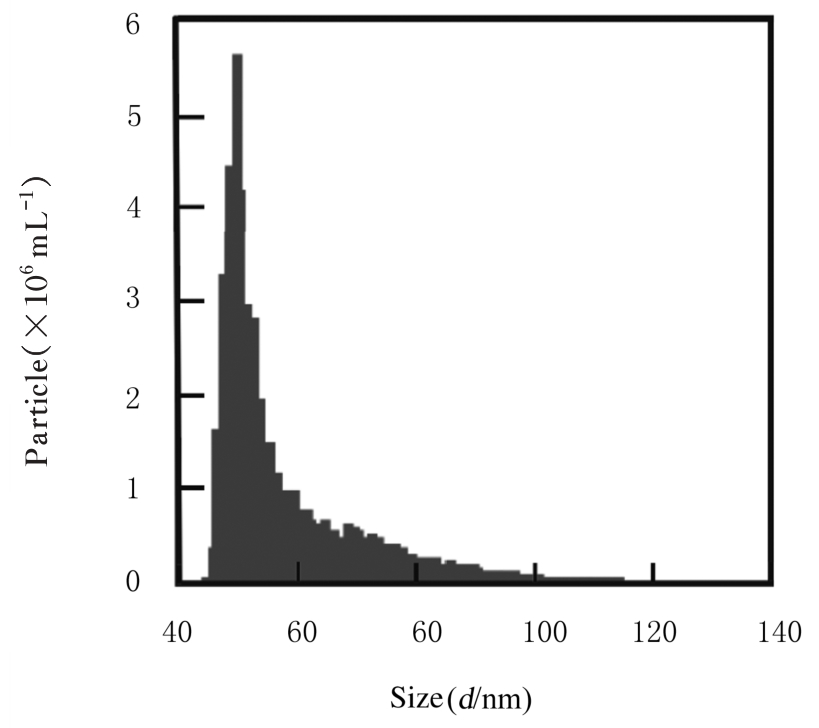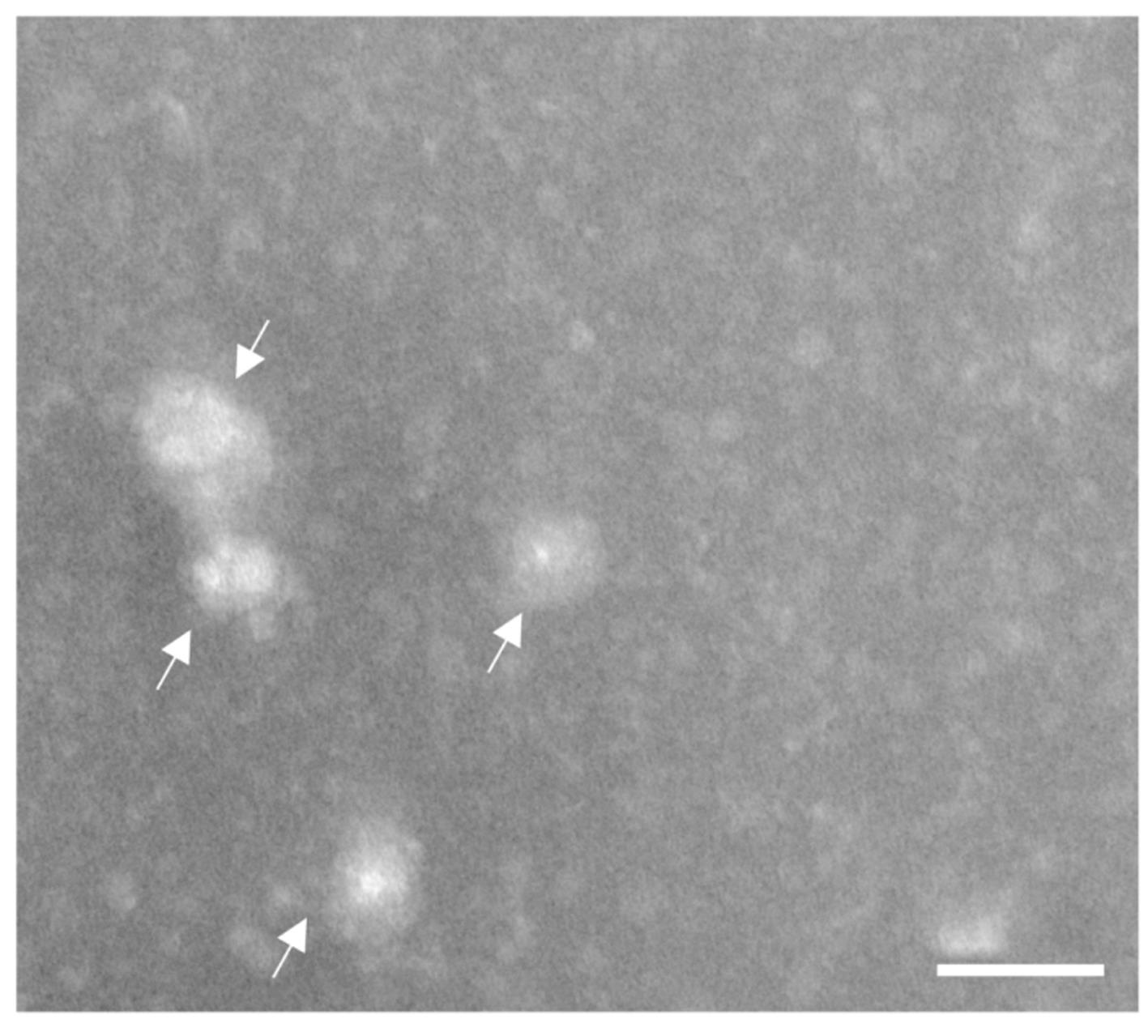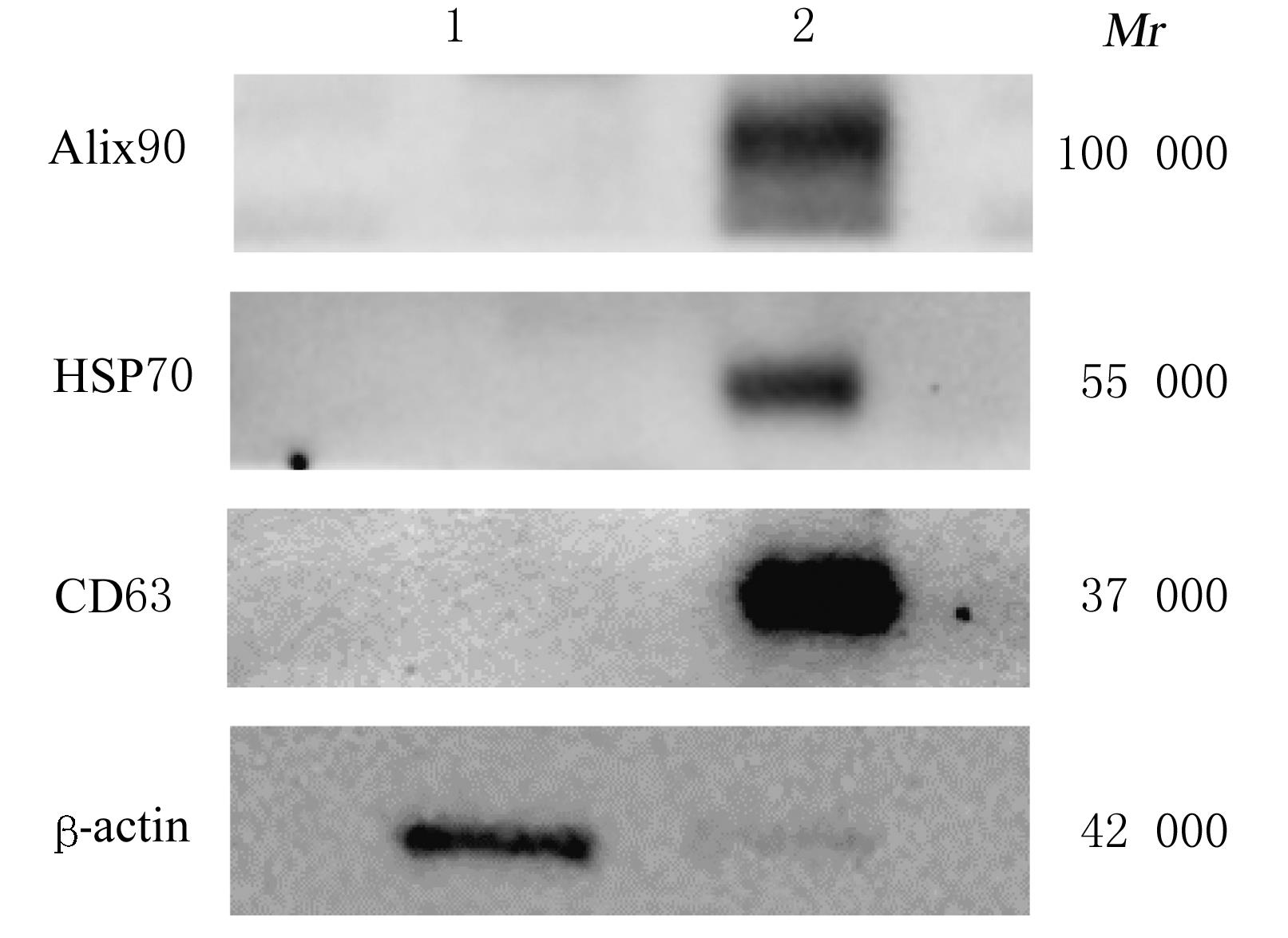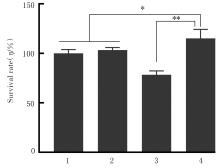| 1 |
ZHU Z Y, ZHANG X N, HAO H J, et al. Exosomes derived from umbilical cord mesenchymal stem cells treat cutaneous nerve damage and promote wound healing[J]. Front Cell Neurosci, 2022, 16:913009.
|
| 2 |
DORSCHNER R A, LEE J, COHEN O, et al. ECRG4 regulates neutrophil recruitment and CD44 expression during the inflammatory response to injury[J]. Sci Adv, 2020, 6(11):eaay0518.
|
| 3 |
LIU P, CHOI J W, LEE M K, et al. Spirulina protein promotes skin wound repair in a mouse model of full-thickness dermal excisional wound[J]. Int J Mol Med, 2020, 46(1):351-359.
|
| 4 |
DARWISH R M, SALAMA A H. Study the effect of conjugate novel ultra-short antimicrobial peptide with silver nanoparticles against methicillin resistant S. aureus and ESBL E. coli [J]. Antibiotics, 2022, 11(8):1024.
|
| 5 |
WHITELEY J, CHOW T, ADISSU H, et al. Topical application of culture expanded CD34+ umbilical cord blood cells from frozen units accelerates healing of diabetic skin wounds in mice[J]. Stem Cells Transl Med, 2018, 7(8):591-601.
|
| 6 |
HU S Q, LI Z H, SHEN D L, et al. Exosome-eluting stents for vascular healing after ischaemic injury[J]. Nat Biomed Eng, 2021, 5(10):1174-1188.
|
| 7 |
JING Y S, CHENG W J, MA Y F, et al. Structural characterization, antioxidant and antibacterial activities of a novel polysaccharide from Zingiber officinale and its application in synthesis of silver nanoparticles[J]. Front Nutr, 2022, 9:917094.
|
| 8 |
MICHELE A D, GUTIÉRREZ C L P, PAGANO C, et al. Formulation and characterization of sustainable bioadhesive films for wound treatment based on barley β-glucan extract obtained using the high power ultrasonic technique[J]. Int J Pharm, 2023, 638:122925.
|
| 9 |
ZAN J, SHUAI Y, ZHANG J, et al. Hyaluronic acid encapsulated silver metal organic framework for the construction of a slow-controlled bifunctional nanostructure: Antibacterial and anti-inflammatory in intrauterine adhesion repair[J]. Int J Biol Macromol, 2023, 230:123361.
|
| 10 |
LIU S X, JIANG N, CHI Y Q, et al. Injectable and self-healing hydrogel based on chitosan-tannic acid and oxidized hyaluronic acid for wound healing[J]. ACS Biomater Sci Eng, 2022, 8(9):3754-3764.
|
| 11 |
SUPHASORN P, APPAMATO I, HARNCHANA V, et al. Ag nanoparticle-incorporated natural rubber for mechanical energy harvesting application[J]. Molecules, 2021, 26(9):2720.
|
| 12 |
CHEN X S, ZHANG H M, YANG X, et al. Preparation and application of quaternized chitosan-and AgNPs-base synergistic antibacterial hydrogel for burn wound healing[J]. Molecules, 2021, 26(13):4037.
|
| 13 |
ZHU Q Y, JIANG M, LIU Q, et al. Enhanced healing activity of burn wound infection by a dextran-HA hydrogel enriched with sanguinarine[J]. Biomater Sci, 2018, 6(9):2472-2486.
|
| 14 |
YU F L, GENG D Z, KUANG Z P, et al. Sequentially releasing self-healing hydrogel fabricated with TGFβ3-microspheres and bFGF to facilitate rat alveolar bone defect repair[J]. Asian J Pharm Sci, 2022, 17(3):425-434.
|
| 15 |
QI M Y, XIA Y, WU Y J, et al. Lin28B-high breast cancer cells promote immune suppression in the lung pre-metastatic niche via exosomes and support cancer progression[J]. Nat Commun, 2022, 13(1):897.
|
| 16 |
COCKERILL I, SU Y C, SINHA S, et al. Porous zinc scaffolds for bone tissue engineering applications: a novel additive manufacturing and casting approach[J]. Mater Sci Eng C Mater Biol Appl, 2020, 110:110738.
|
| 17 |
GAO C H, CHENG H, XU N, et al. Poly(dopamine) and Ag nanoparticle-loaded TiO2 nanotubes with optimized antibacterial and ROS-scavenging bioactivities[J]. Nanomed-Nanotechnol Biol Med, 2019, 14(7):803-818.
|
| 18 |
WANG Y C, LIN S H, CHIEN C S, et al. In vitro bioactivity and antibacterial effects of a silver-Containing mesoporous bioactive glass film on the surface of titanium implants[J]. Int J Mol Sci, 2022,23(16):9291.
|
| 19 |
STECKIEWICZ K P, CIECIÓRSKI P, BARCIŃSKA E,et al. Silver nanoparticles as chlorhexidine and metronidazole drug delivery platforms: their potential use in treating periodontitis[J]. Int J Nanomedicine, 2022, 17:495-517.
|
| 20 |
CHEN Q, YIN C, MA J, et al. Preparation and evaluation of topically applied azithromycin based on sodium hyaluronate in treatment of conjunctivitis[J]. Pharmaceutics, 2019, 11(4):183.
|
| 21 |
KIM T H, YUN Y P, SHIM K S, et al. In vitro anti-inflammation and chondrogenic differentiation effects of inclusion nanocomplexes of hyaluronic acid-beta cyclodextrin and simvastatin[J]. Tissue Eng Regen Med, 2018, 15(3):263-274.
|
| 22 |
WANG L Y, ZHANG D, REN Y K, et al. Injectable hyaluronic acid hydrogel loaded with BMSC and NGF for traumatic brain injury treatment[J]. Mater Today Bio, 2022, 13:100201.
|
| 23 |
SANG X H, ZHAO X H, YAN L Q, et al. Thermosensitive hydrogel loaded with primary chondrocyte-derived exosomes promotes cartilage repair by regulating macrophage polarization in osteoarthritis[J]. Tissue Eng Regen Med, 2022, 19(3):629-642.
|
| 24 |
FARUQU F N, LIAM‐OR R, ZHOU S, et al. Defined serum‐free three‐dimensional culture of umbilical cord‐derived mesenchymal stem cells yields exosomes that promote fibroblast proliferation and migration in vitro [J]. FASEB J, 2021, 35(1):e21206.
|
| 25 |
LIU B, KONG Y F, SHI W, et al. Exosomes derived from differentiated human ADMSC with the Schwann cell phenotype modulate peripheral nerve-related cellular functions[J]. Bioact Mater, 2022, 14:61-75.
|
| 26 |
YANG Y, PENG Y, LI Y, et al. Role of stem cell derivatives in inflammatory diseases[J]. Front Immunol, 2023, 14:1153901.
|
| 27 |
GOODARZI P, LARIJANI B, ALAVI-MOGHADAM S,et al. Mesenchymal stem cells-derived exosomes for wound regeneration[J]. Adv Exp Med Biol, 2018, 1119:119-131.
|
| 28 |
VU N B, NGUYEN H T, PALUMBO R, et al. Stem cell-derived exosomes for wound healing: current status and promising directions[J].Minerva Med,2021,112(3):384-400.
|
| 29 |
MAO L, LI Y D, CHEN R L, et al. Heart-targeting exosomes from human cardiosphere-derived cells improve the therapeutic effect on cardiac hypertrophy[J]. J Nanobiotechnology, 2022, 20(1):435.
|
| 30 |
LI Q J, GONG S Q, YAO W F, et al. Exosome loaded genipin crosslinked hydrogel facilitates full thickness cutaneous wound healing in rat animal model[J]. Drug Deliv, 2021, 28(1):884-893.
|
| 31 |
ZHANG Z X, ZHOU Y J, GU P, et al. Exosomes derived from human umbilical cord mesenchymal stem cells alleviate Parkinson’s disease and neuronal damage through inhibition of microglia[J]. Neural Regen Res, 2023, 18(10):2291-2300.
|
| 32 |
QIN D, ZHANG A D, WANG N, et al. Hydroxybutyl chitosan/oxidized glucomannan self-healing hydrogels as BMSCs-derived exosomes carriers for advanced stretchable wounds[J]. Appl Mater Today, 2022, 26:101342.
|
 ),Ling QI2(
),Ling QI2( )
)



















